Running and Bodybuilding: How to Get Rid of Fat and Save Muscle
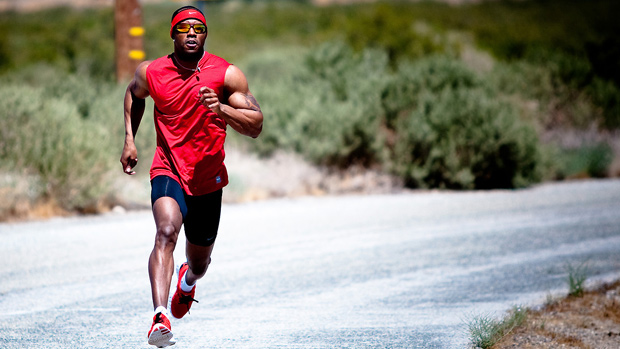
Running and Bodybuilding
Bodybuilders do not like to run, because they are afraid of injuries and loss of such hard efforts of the acquired muscles. But if you approach the matter wisely, running is a safe, natural, and accessible sport that can bring undoubted benefit to people who want to have bigger muscles.
This photo can enter into the stupor of anyone: a huge pumped-up man runs along a two-lane mountain road. On the shaved head, incredibly massive deltas, and back, we can easily find out the best bodybuilder of the time, 7-time winner of the title Mr. Olympia American Phil Heath.
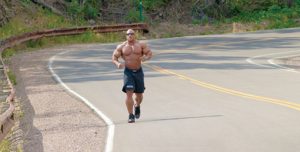
However, this is just a staged photo for the cameras, in reality, everything is a little different. Yes, Heath played a lot of basketball in college. He, like almost all bodybuilders, uses cardio to get rid of fat and to be in shape – but usually, it all comes down to about one hour of light aerobic exercise on a low pulse. It can be riding a stationary bike, an elliptical trainer, or walking on a treadmill at a speed of 5-5.5 km / h and a tilt angle of 3 degrees.
Hit, like all elite athletes of his level, can hardly run 2-3 km, more precisely, he does not need to strive for this. Many bodybuilders have a huge muscle mass, which can affect the health of their bones and joints. And anyone who ever touched the iron knows that running burns muscles.
Hence the question is born, is it really necessary to run to bodybuilders? Can it benefit a person who wants to reduce the level of subcutaneous fat, improve their cardiovascular system, participate periodically in simple races, but at the same time keep the muscles and not injure the joints?
Many trainers – although not experts in the preparation for bodybuilding competitions – believe that people interested in muscle mass and hypertrophy can safely burn fat by running, improve posture and functional fitness if they follow the tips given below. Do not do these things before a hard workout.
Use the natural running technique. You can significantly reduce the negative impact of running on joints and connective tissue, using natural “soft” running. With this technique, you easily land on a slightly bent leg directly underneath and thus avoid a traumatic heel strike against the surface, which increases the strain on your bones and joints.
Periodically, exercise at a low heart rate. Try to keep the heart rate in the zone of the aerobic lipid threshold (approximately 110-140 beats per minute), at which fat is used as the main energy source. Applying the classical periodization program, over time, you can slowly increase the tempo and become faster by exercising at a pulse that will allow you to burn fat.
Perform sprints. Short, high-intensity interval sessions should be performed immediately after leg training. This type of load creates a training effect similar to the anabolic effect of strength training and increases EPOC (excess oxygen consumption after exercise), which will allow for additional burning of calories for 48 hours.
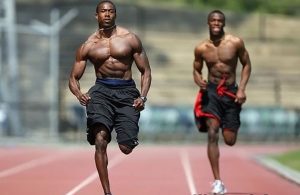
Before we look at these concepts in more detail, many may have a question: why run at all when other less risky aerobic exercise options are available, such as, for example, a bicycle or an elliptical trainer?
The thing is that nothing burns fat like running, and nothing is so convenient, natural, and functional.
According to the Mayo Clinic (one of the largest private medical and research centers in the world), a 90-kilogram man running at a speed of 8 km / h burns 755 kcal per hour – almost 50 percent more than rowing and swimming, and even more than aerobics, basketball and ice skating. With an increase in speed to 9.5 km / h, this value increases to 917 kcal / h. Only climbing the stairs (819 kcal) for energy costs exceeds the light run of 8 km / h.
1. Use a safe jogging technique for joints
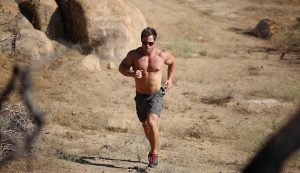
The “Qi-run” method, proposed by ultramarathoner Danny Dreyer, like the “Running method of running” of the famous Russian scientist and triathlon trainer Nikolai Romanov, reduces the shock load on the joints and turns the leg into a big spring that moves you forward. These two racing techniques have gained wide popularity in the last ten years among runners who are concerned about permanent injuries and injuries. The explanation is quite simple: Pose method and Qi-run basically copy the landing, leg position, and frequency when running barefoot.
If their study may seem too difficult for you, then just take off your shoes and try to run barefoot 50 meters. Without the support of the heel in the treadmill, which protects you, you will feel some differences:
- No hitting of the heel against the surface. Otherwise falling on the heel will cause you pain and discomfort;
- Running from the front/middle of the foot.You land on the front/middle of the foot. Your heel falls immediately after that;
- You sink to the knee, not straightened. Landing on a straight leg and heel kick is possible in sneakers that have to cushion – but not when running barefoot;
- Short steps. You land on the wide front of the foot under the center of gravity, and not one or two steps ahead, as you can do it in the shoes.
If you remember these four things, then when you again wear sneakers, you will get to run “gently”.
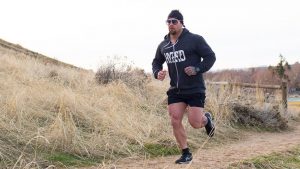
In the period when you will master the new technique of running, you also need to increase your cadence (the number of steps). This will save the speed as the step length decreases. A high frequency of steps reduces traumatic potential since the foot is subjected to a load only while it is in contact with the ground. Therefore, gently land on the front of the foot, and after lightly touching the heel again lift it. Try to stick to the frequency of 180 steps per minute – 90 per foot. At first, it will be a little uncomfortable and tedious, but you will quickly get used to it.
After you have learned the correct technique of running and your body is gradually adapting to the new biomechanics of the movement – in particular calves and Achilles’ tendons, become weaker and shorter from many years of landing on the heel and walking on the rise – you will feel a noticeable reduction in the impact of the blow on your ankle, knee, and hip joints, as well as reducing the amount of damage to connective tissue and muscles. Some studies have found that due to the natural technique of running, the impact load is reduced to 50 percent.
2. Learn how to burn fat, keeping muscles
To cope with yet another negative impact of running – muscle loss – you should perform two types of training: a long slow run and intervals.
Continuous slow running. Twice a week, preferably on days that are free from training in the gym, run lightly for 30-60 minutes. Theoretically, a low heart rate with this type of running should not be something new for the pumping: the same cardio at the pulse of 120-140 beats per minute, which they always performed on an exercise bike or a stirrer to burn fat.
In the anaerobic zone of low intensity, your body moves slowly enough to consume all the oxygen needed to use fat as the main fuel. Fat is rich in calories, but it requires a lot of oxygen to split it. The main condition for long runs is not to exceed the allowable range of heart rate, which will not be easy for most people, especially for those who have just started running. Using natural running technique can lead to the fact that you leave the pulse zone of fat burning, so you should restrain yourself a little.
The main task of running, like any other type of cardiovascular work, is to develop in the muscle fibers of mitochondria (tiny power plants inside the cell where fuel is burned and energy is generated), which will make it possible to burn fat better.
This happens when you stay in the intensity zone, where the main source of energy is fat reserves. But if you exceed the upper limit of this zone (technically your “threshold”, where you can not get enough oxygen to maintain your speed), your muscles will switch to more readily available fuel – carbohydrates.
Running at this pace not only reduces the use of fat as a source for energy and slows down the development of its combustion mechanism, but also creates stress for your muscles, which negatively affects their recovery.
Remember that if you have worked hard in the gym the day before, the best solution that will save the positive effect of strength training will be to devote the day to cardio recovery.
How to determine that you are not running too fast? For this purpose, use the “conversation test”. It means that during the whole run you should be able to easily and comfortably conduct a conversation without a strong sniffle. To be sure that you have chosen the right tempo, use a heart rate monitor/heart rate monitor. Set it to the “conversational” tempo of the run and set the sound signal as soon as you exceed the preset heart rate range.
In addition to burning a large amount of fat, prolonged running at low intensity also strengthens the tendons, ligaments, connective tissue, which allows the body to successfully cope with the load, and allows you to focus on the correct technique of running.

Interval training. Once a week, conduct short, intensive interval sessions immediately after leg training. Intervals (eight 10-30 second sprints, performed with about / maximum speed on the treadmill at an angle, with one minute of walking/jogging to restore) prolong the effect of your power work, thanks to EPOC (or as it is also called post-activation potentiation). The hormonal response to such loads (especially testosterone) is very similar to the one that occurs when working with “iron.” Besides, the intervals do not take much time: only 20 minutes for eight sprints and periods for recovery between them, including warm-up and hitching. But you should not hold such sessions more than once a week, as they create great stress for your joints. Minimize the impact load and increase the effect of training with Turinabol 10mg,
Training plan
Most importantly, running should be considered only as an addition to your basic training in the gym, and not as a way to “finish off” yourself. Your main goal is to burn fat, speed up recovery, and improve physical fitness while maintaining muscle mass.
Therefore, if you heavily trained up / down the body or large muscle groups on Monday / Tuesday or Thursday / Friday, Wednesday and Saturday will be the most suitable time for a continued run on a low pulse. The third running exercise can consist of performing high-intensity intervals in addition to heavy leg training. To keep muscles, do not run more than three days a week or more than 60 minutes at a time. For those who want to participate in cross-country competitions, you should gradually increase the speed and mileage of long runs, while the interval session remains unchanged.